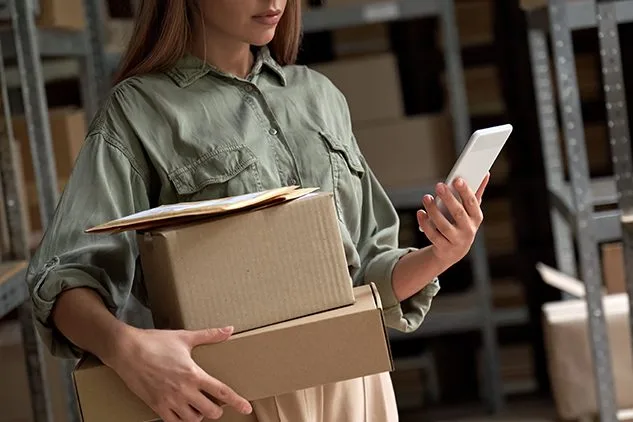In-Store Fulfillment: Why You Need to Use Ship-From-Store
Whether you’re in the middle of peak season or not, online orders don’t stop.
While ship-from-store (SFS) is exceptionally popular right now, it isn’t like many of the bandwagon trends that come and go in a matter of months. In fact, with online shopping continuing to soar and in-store shopping struggling to recover from the impacts of Covid-19, SFS is actually a non-negotiable for many retailers. Let’s look at 4 reasons why.
Keep Up With Demand
Whether you’re in the middle of peak season or not, online orders don’t stop. Someone, somewhere, is always looking at and purchasing your products. This can be a problem if you don’t have enough inventory in a certain fulfillment center, though, because a lack of available products means stockouts and backorders for your customers.
By adding products to your total available inventory, ship-from-store eliminates the risk of low inventory levels in high-demand areas (like cities and booming suburbs). As a result, you can continue to fulfill online orders seamlessly, even when a product oversells in a particular area.
Faster Shipping Time
Amazon has set the bar high in terms of shipping time. Now, many of their products can reach customers within a day or two. And if customers are within certain zip codes, they can even have products delivered the same day.
That means retailers that want to stay competitive in the eyes of online and omnichannel shoppers need to accelerate their shipping time.
Shipping orders from stores rather than fulfillment centers allow you to do that, as most stores are closer to customers than the nearest warehouse or distribution center. At the same time, customers don’t have to wait for a full truckload of orders to head in their direction before getting their order. It can be picked up and delivered by employees, third-party delivery drivers, or carriers at any time.
Minimize Dead Stock
Deadstock is a huge problem. Not only is does it mean lost revenue, but it’s also a major hassle to store and get rid of.
While shipping products from stores doesn’t completely eliminate the risk of deadstock, it does minimize it. All inventory from every location can be stored in an omnichannel OMS. And as customers purchase those products, they can be sourced from any location to fulfill the order.
For example, if there’s greater demand for a product in a metro area, like New York City, but minimal demand in a rural New York town, products can be pulled from those shelves to fulfill the online orders in the city. In that way, customers are able to get products quickly and retailers minimize overstock in less popular locations.
Reduce Shipping Costs
Now that customers expect free (or extremely cheap) shipping, retailers have to find new ways to counteract the cost. This can be done by adjusting product prices, negotiating better rates with carriers, or shortening the distance between fulfillment locations and customers’ homes.
Ship-from-store does the latter. In fact, by shipping products from brick-and-mortar locations, retailers can successfully increase their margins significantly. Take an order headed for Charleston, South Carolina for example. If you ship the product from a fulfillment center in Atlanta, Georgia, it will logically cost a lot more than delivering the product from a brick-and-mortar location within the Charleston city limits. And when you compound these effects hundreds or thousands of times for orders placed all around the country, those savings quickly add up.
While it’s smart to stay on top of fulfillment trends, you need to make sure they’re right for your business before investing in any of them — especially if they require a process overhaul at every brick-and-mortar location. There are a lot of great arguments to be made for ship-from-store (SFS) fulfillment, though. Besides being a great way to boost customer satisfaction (via faster shipping time), it also enables you to minimize stockouts, decrease overstock, and slash shipping expenses.
See how Radial Ship-From-Store can help you capitalize on this critical trend.
